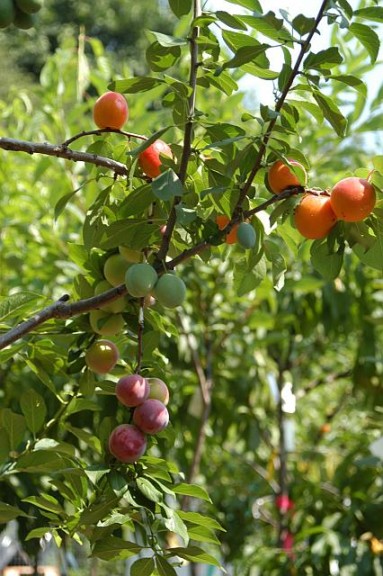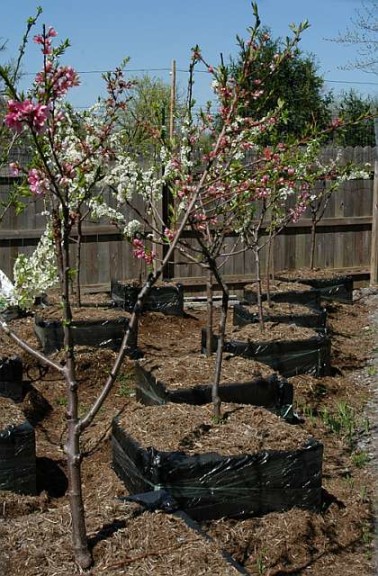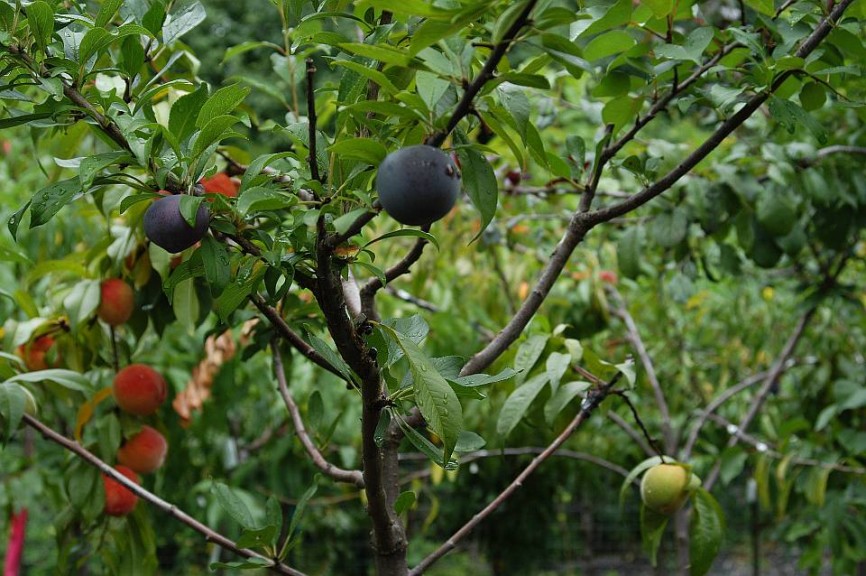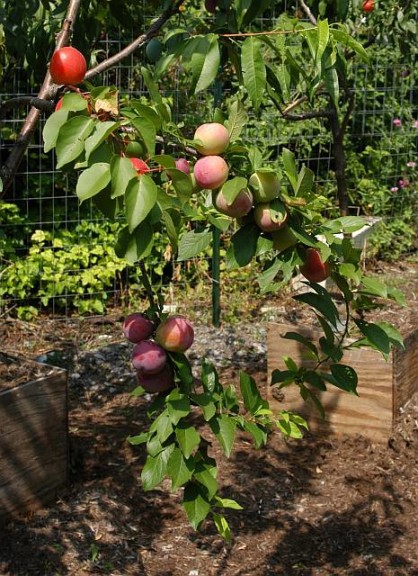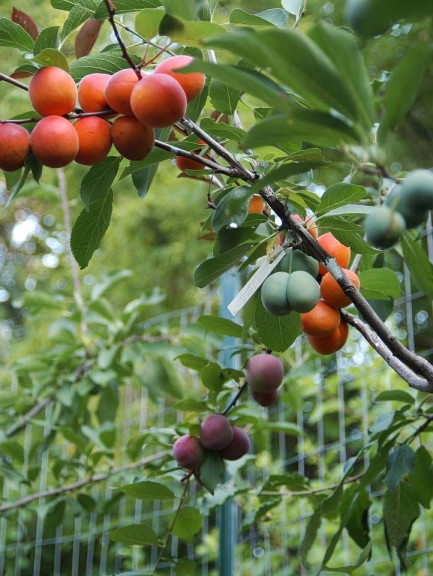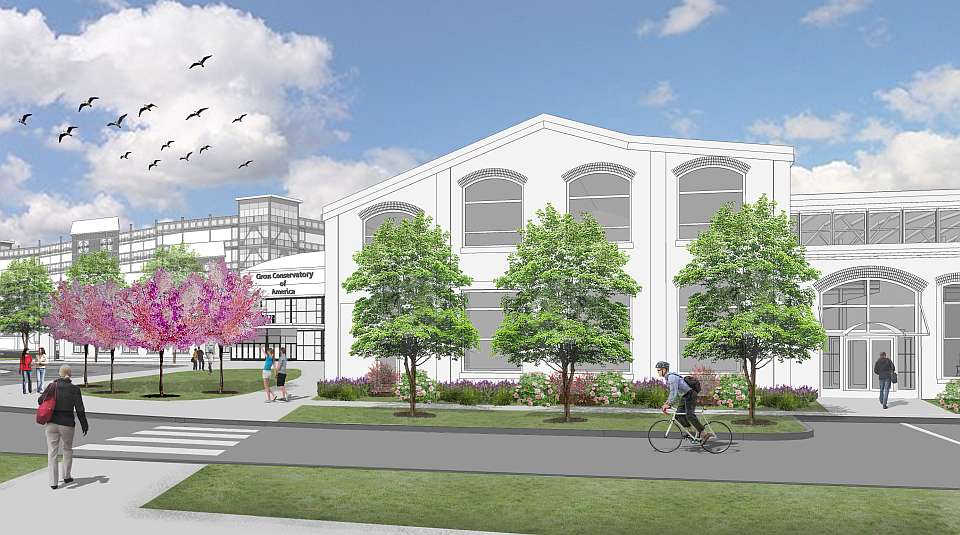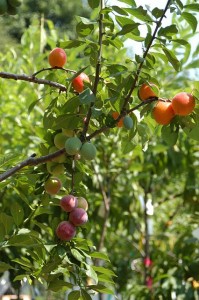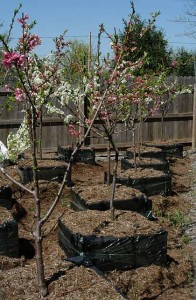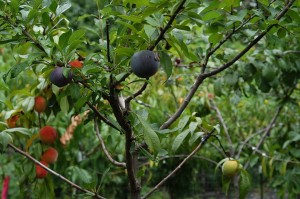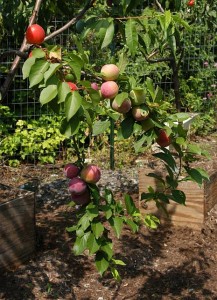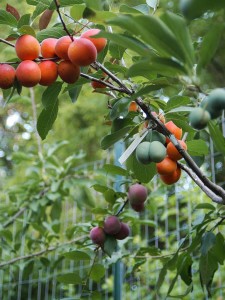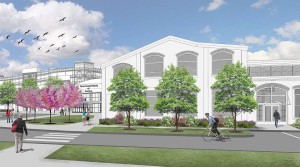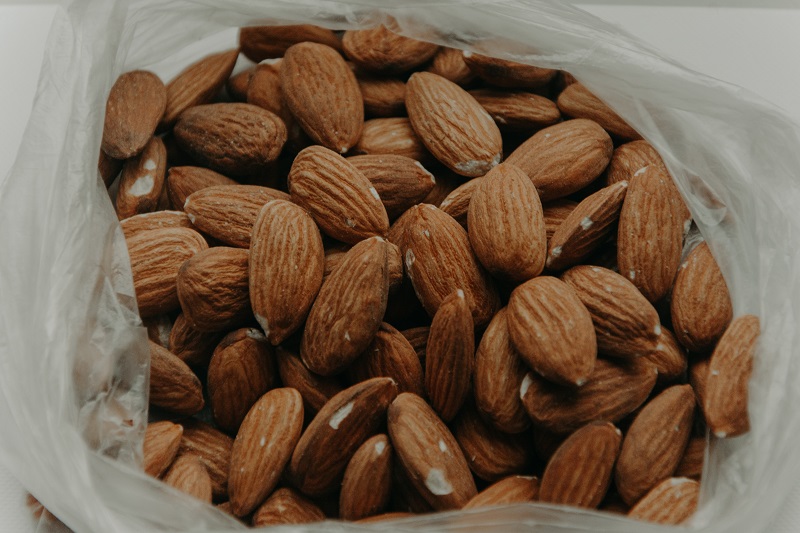Heard Of The Tree Of 40 Fruit?
[blackoutgallery id=”66721″]
Grafting a tree can be a complicated matter for just one variety. But, imagine grafting 40 different fruits and nuts to one tree. That’s exactly what Sam Van Aken, a sculptor and professor at Syracuse University’s College of Visual and Performing Arts, has done.
Van Aken likens grafting to sculpting, approaching each project in terms of how the tree will appear at bloom, adding varieties with vibrant colors to achieve an unmistakably usual tree. Sculptures joining pieces of fruit was an inspiration for him to graft vegetables together. He decided to try fruit trees.
“Peaches, apricots, and plums all have a different blossom to them. I realized I could do these pink, and white, and crimson-colored [blossoms],” he says.
He acknowledges, though, that his project isn’t practical.
“When I started this, growers would look at me and say ‘I just don’t understand why you’d want to do that. You’d have to come back to that tree 40 times to pick it,’” he says.
To say he is dedicated to this project is a of bit of an understatement. It takes 9 years for Van Aken to create each tree. Six of those years, the tree is spent in the nursery, where he grafts 20 varieties. Once the tree is planted at its site, he comes back twice a year for three additional years to graft and prune the trees until each tree has 40 varieties.
“There’s only been a few times where I’ve actually questioned my sanity on this,” he says.
How He Grafts
Material for the Tree of 40 Fruit came from an heirloom stone fruit orchard at the New York State Agricultural Experiment Station in Geneva, NY. As Van Aken began to gather source material for his project, the orchard was set to be removed. He leased the orchard to keep it functioning for a few years until he was able to graft all the varieties. He estimates that he has 200 varieties of stone fruit, some of which are so rare they may only exist in his orchard and in germplasm.
As a preservation project, he needed to collapse the orchard into as few trees as possible, because Van Aken started his project as a container orchard.
“I had all these varieties that I had to get off the trees in Geneva,” he says. “I’ll just stick graft on top of graft and then gradually the trees become built.”
In retrospect, he says it would have been easier to start with some land and trees in the ground. Van Aken still root-prunes 40-45 trees in his nursery each spring, with root balls about 2-feet by 2 feet.
He uses a Myrobalan rootstock and a plum innerstock as the base for his grafting. Peach innerstock, he realized, was too weak to work with and one part of the tree will start to outgrow the other. Also through trial and error, he developed a bloom timeline of all the varieties to ensure that each tree blooms around the same time, to get the full effect.
“I grafted this tree together that blossomed on one side. I looked at it and thought ‘this is awful, I need to rethink this,’” he says. “I drew diagrams for the trees so I know what I’m grafting to what so that way I can still track all the different varieties. I know what successfully grafts to another thing.”
European plums have been quite hardy, he says, and he is also learning the inconsistent yields of some of the heirloom cultivars. He also uses some cold-hardy almond varieties, Hull’s Hardy Almond, specifically. Almonds have been easy to work with and cherries have been the biggest challenge, he says.
The Goal Of The Project
“It still remains an art project for me in that I wanted to create this experience that when somebody would happen upon these trees, they would see it blossom in these different colors, it would cause a certain re-thinking,” he says. “I thought of it as the beginning of a story, much like the tree of life, and it seems to function in that way.”
Van Aken sells the trees as art installations. He has trees in Louisville, KY, Bentonville, AK, and in New York and California. He says a portion of the proceeds has been designated to creating an heirloom, antique, and native stone fruit orchard to reintroduce some of these varieties. He hopes to not have to charge for budstock. A field guide book is also being considered.
In the end, Van Aken says he learned a lot spending time in his nursery.
“Growing up on a farm, I’d always thought of a plum as just a plum. I thought I knew agriculture, but this project is really about finding about all of these varieties and it’s just fascinating,” he says. “My family just gets a big kick out of the fact that I’m back farming.”





